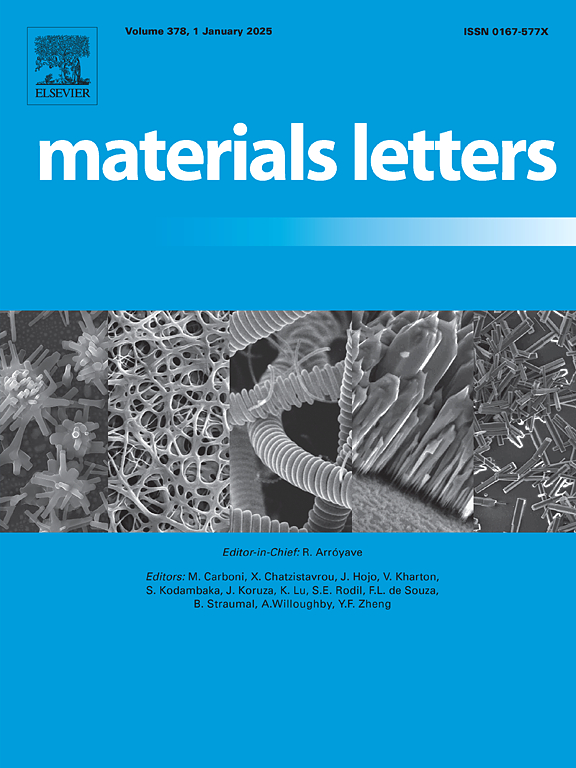超薄太阳能电池用溶液处理Cu2MnSnS4纳米颗粒薄膜
IF 2.7
4区 材料科学
Q3 MATERIALS SCIENCE, MULTIDISCIPLINARY
引用次数: 0
摘要
采用自旋涂覆前驱体溶液结合低温(~ 300℃)短时间热退火(5 min),在ITO衬底上原位制备了Cu2MnSnS4纳米颗粒致密薄膜。制备的Cu2MnSnS4纳米颗粒膜在300 ~ 900 nm范围内的带隙为1.63 eV,吸收系数为104 cm−1。首次制备了ITO/Cu2MnSnS4/CdS/Al结构的超薄太阳能电池,其Cu2MnSnS4薄膜厚度为65 nm,峰值效率为0.50%。此外,这种溶液处理方法还可以推广到其他Cu2MSnS4 (M = Co, Ni, Cd和Mg)纳米颗粒薄膜的制备。本文章由计算机程序翻译,如有差异,请以英文原文为准。
Solution-processed Cu2MnSnS4 nanoparticle film for ultrathin solar cells
The compact thin films of Cu2MnSnS4 nanoparticles are in situ prepared on ITO substrate by spin-coating precursor solution combined with a short thermal annealing (5 min) at low temperature (∼300 °C). The as-prepared Cu2MnSnS4 nanoparticle film exhibits a bandgap of 1.63 eV and an absorption coefficient of >104 cm−1 within 300–900 nm. The ultrathin solar cell structured as ITO/Cu2MnSnS4/CdS/Al with 65 nm-thick Cu2MnSnS4 film is firstly fabricated and achieves a peak efficiency of 0.50 %. Moreover, this solution-processing method could be extended to prepare other Cu2MSnS4 (M = Co, Ni, Cd and Mg) nanoparticle films for photovoltaics.
求助全文
通过发布文献求助,成功后即可免费获取论文全文。
去求助
来源期刊

Materials Letters
工程技术-材料科学:综合
CiteScore
5.60
自引率
3.30%
发文量
1948
审稿时长
50 days
期刊介绍:
Materials Letters has an open access mirror journal Materials Letters: X, sharing the same aims and scope, editorial team, submission system and rigorous peer review.
Materials Letters is dedicated to publishing novel, cutting edge reports of broad interest to the materials community. The journal provides a forum for materials scientists and engineers, physicists, and chemists to rapidly communicate on the most important topics in the field of materials.
Contributions include, but are not limited to, a variety of topics such as:
• Materials - Metals and alloys, amorphous solids, ceramics, composites, polymers, semiconductors
• Applications - Structural, opto-electronic, magnetic, medical, MEMS, sensors, smart
• Characterization - Analytical, microscopy, scanning probes, nanoscopic, optical, electrical, magnetic, acoustic, spectroscopic, diffraction
• Novel Materials - Micro and nanostructures (nanowires, nanotubes, nanoparticles), nanocomposites, thin films, superlattices, quantum dots.
• Processing - Crystal growth, thin film processing, sol-gel processing, mechanical processing, assembly, nanocrystalline processing.
• Properties - Mechanical, magnetic, optical, electrical, ferroelectric, thermal, interfacial, transport, thermodynamic
• Synthesis - Quenching, solid state, solidification, solution synthesis, vapor deposition, high pressure, explosive
 求助内容:
求助内容: 应助结果提醒方式:
应助结果提醒方式:


